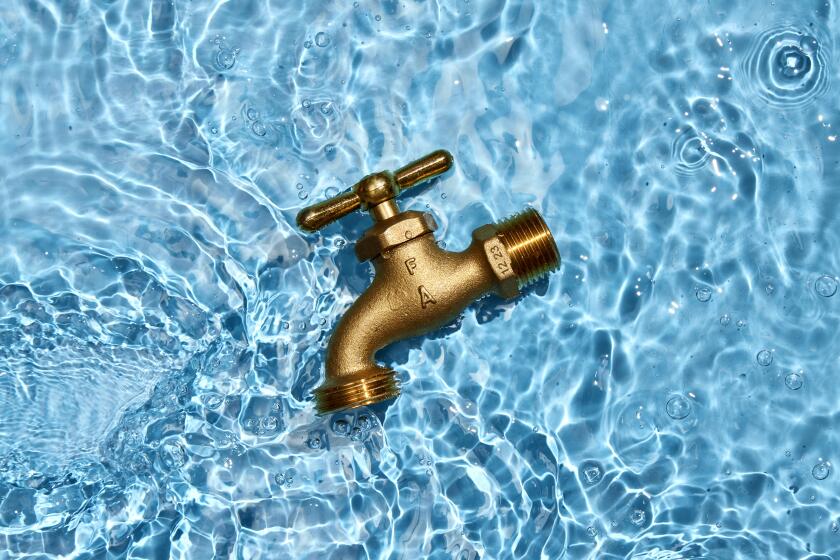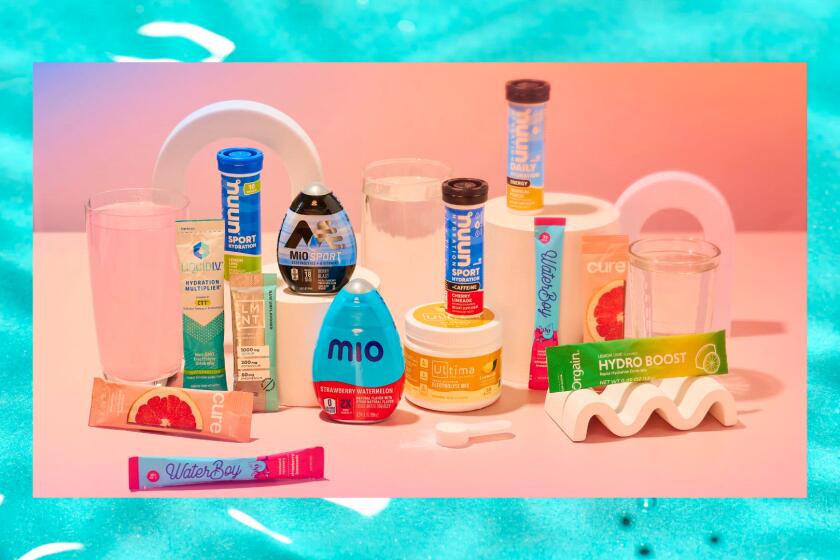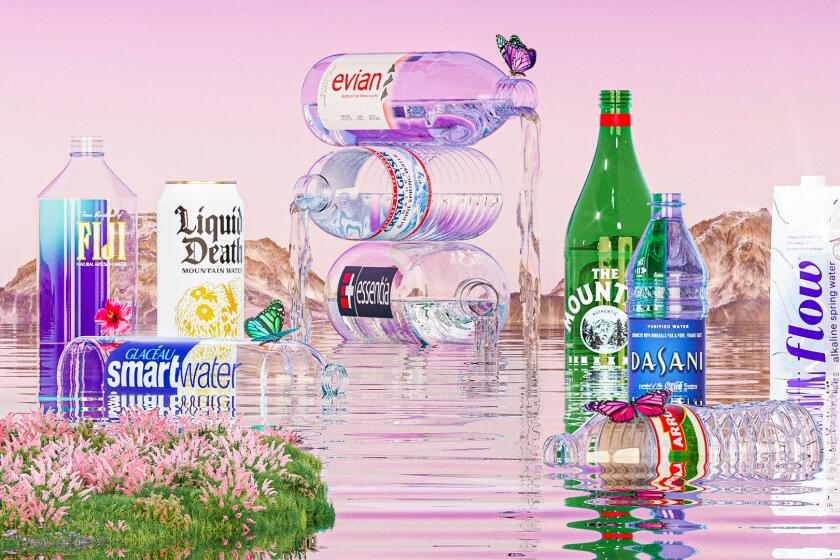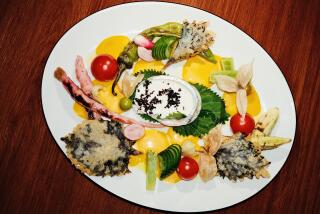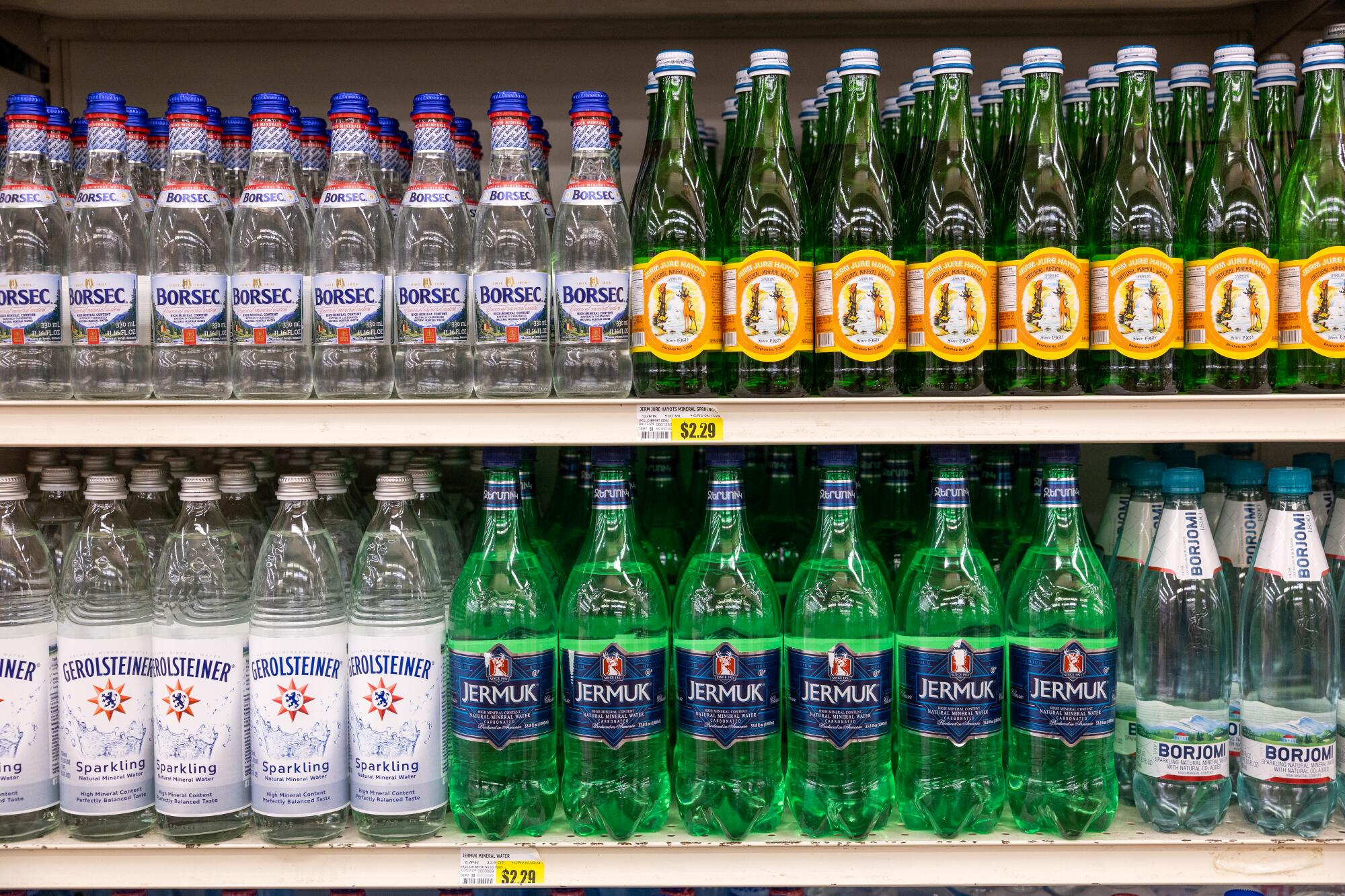
I’ve just discovered a secret oasis in the sparkling water aisle at a local grocery store in Little Armenia. I’ve driven past this location many times but never paid it any notice. By my side is Martin Riese, a certified water sommelier. He’s pointing to bottles from international brands I’ve never heard of. Riese highlights some noteworthy selections: Ararat (from Armenia), Gerolsteiner (from Germany), Jermuk Borjomi (from Georgia) and Tehuacan (from Mexico), which he’s never seen before — a rarity for the H20 obsessive.
In L.A., water rules everything around us. Drink up, cool off and dive into our stories about hydrating and recreating in the city.
No, we are not at Erewhon, Lassen’s or any other upscale, trendy market. Rather, we are standing inside a Jons Fresh Marketplace, a family-owned L.A. grocery chain. According to Riese, it’s the best place to buy rare, affordable drinking water in L.A. In addition to general market waters like Crystal Geyser and Arrowhead, the store offers more than a dozen water brands from at least eight countries.
Riese should know where to buy the best water. He created his first “water menu” in Berlin in 2005 and has been certified as a water sommelier by the German Water Trade Assn. since 2011. His days are spent consulting for beverage brands, educating people about water via his popular TikTok and holding monthly Zoom water tastings that cost $105, which includes the cost of water and participation for up to four people. German-born, he came to the United States in 2011 but didn’t discover Jons until he moved to Van Nuys in 2022 and found one right next to his house.
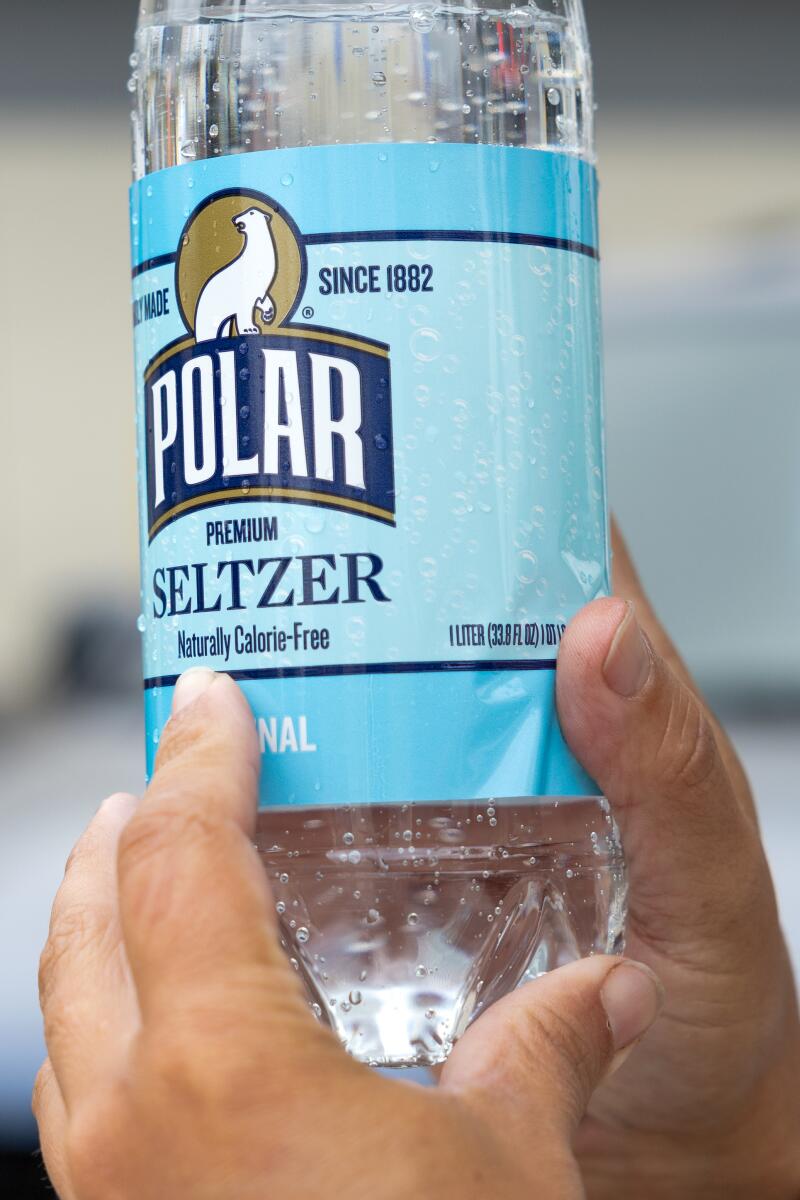
Water sommelier Martin Riese points out the absurdity of “Naturally Calorie-Free” labeling on a bottle of water.
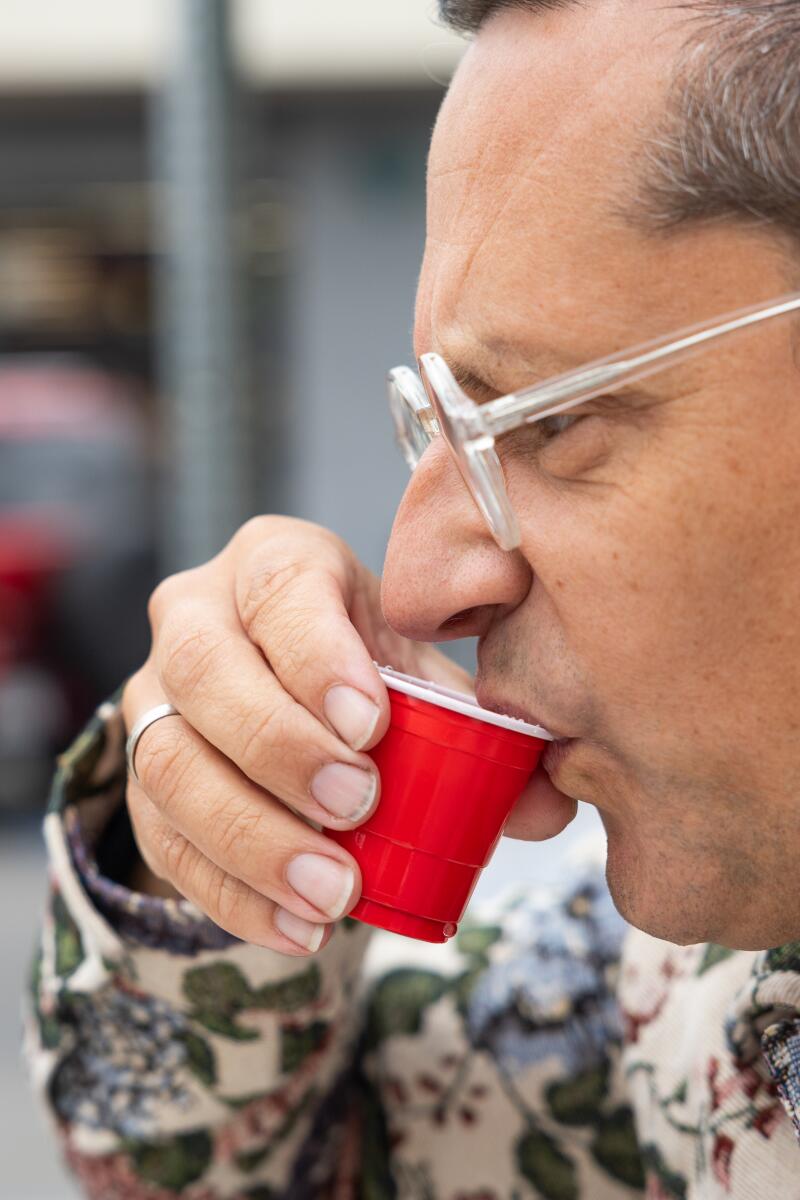
Riese tastes a sample of mineral water purchased from Jons.
“I want to bring awareness to people that there’s other options than the regular stuff you can find literally in Pavilions or Ralphs,” Riese says. “They always have the same brands. I walked in [to Jons] and I could not believe you can actually buy this great portfolio in a store.”
Jons was founded in 1977 by John and Jack Berberian, Armenian immigrants, with Los Angeles’ vast foreign population in mind.
We spoke to experts in the realms of science, academia and water filtration to help you navigate the often complicated, ever-fluid world of residential tap water, so that you can make smarter and more informed choices about how to purify your drinking water.
“They were committed to helping other recent immigrants adjust to their new lives by making some of the food and ingredients that were familiar to them [available],” says Dave Harriman, the director of retail nonperishable departments. The company has long claimed that Jons was the first L.A. grocery store to offer international foods.
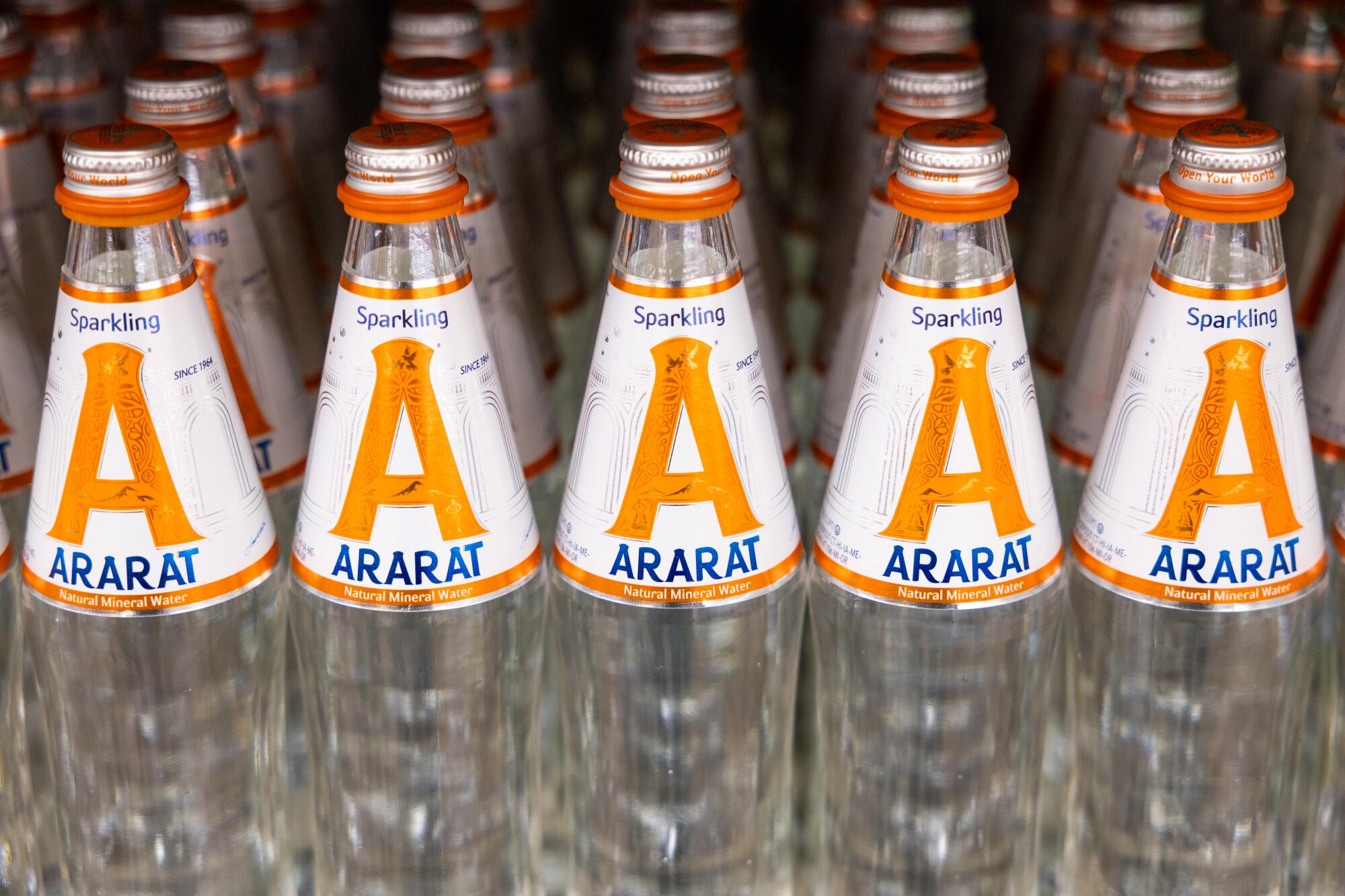
This merchandising approach extends to the water selection, specifically the sparkling aisle. Most “bottled waters” available in American grocery stores are simply filtered tap water, essentially what you could make at home with your Brita, according to Riese. To sommeliers like him, spring or mineral waters are preferable because they come from a natural source; they are rich in calcium, magnesium and sodium. Depending on the water, there are different levels of each, changing not just its taste but its health benefits. Unlike most American waters, European water labels that Jons carries detail each of their product’s exact mineral composition on the bottle.
Hydration supplements are a booming business — but do these water additives really work? Doctors and nutrition experts weigh in.
Riese explains that in Germany, there are more than 60 water brands so packed with minerals that they go beyond simple hydration and are considered a form of medication by the German Federal Office of Consumer Protection and Food Safety.
“This is a state-approved medication, but it’s nothing else than bottled water,” he said. “So for example, a Gerolsteiner — which you can find at Jons — has the same amount of calcium as a glass of milk.”
Other highlights among Jons aisles are Borjomi, a Georgian seltzer that’s available in L.A. only at international grocery stores like Jons and Super King. Romano Chobanu, a sales manager for the water brand, calls it a “unique water,” with a “specific taste, which is different than other mineral waters like Italian.” It’s high in sodium and is used as a hangover cure in Eastern Europe: “After you’re having your party or something, you drink Borjomi,” he said. (A strategy Riese endorses.)
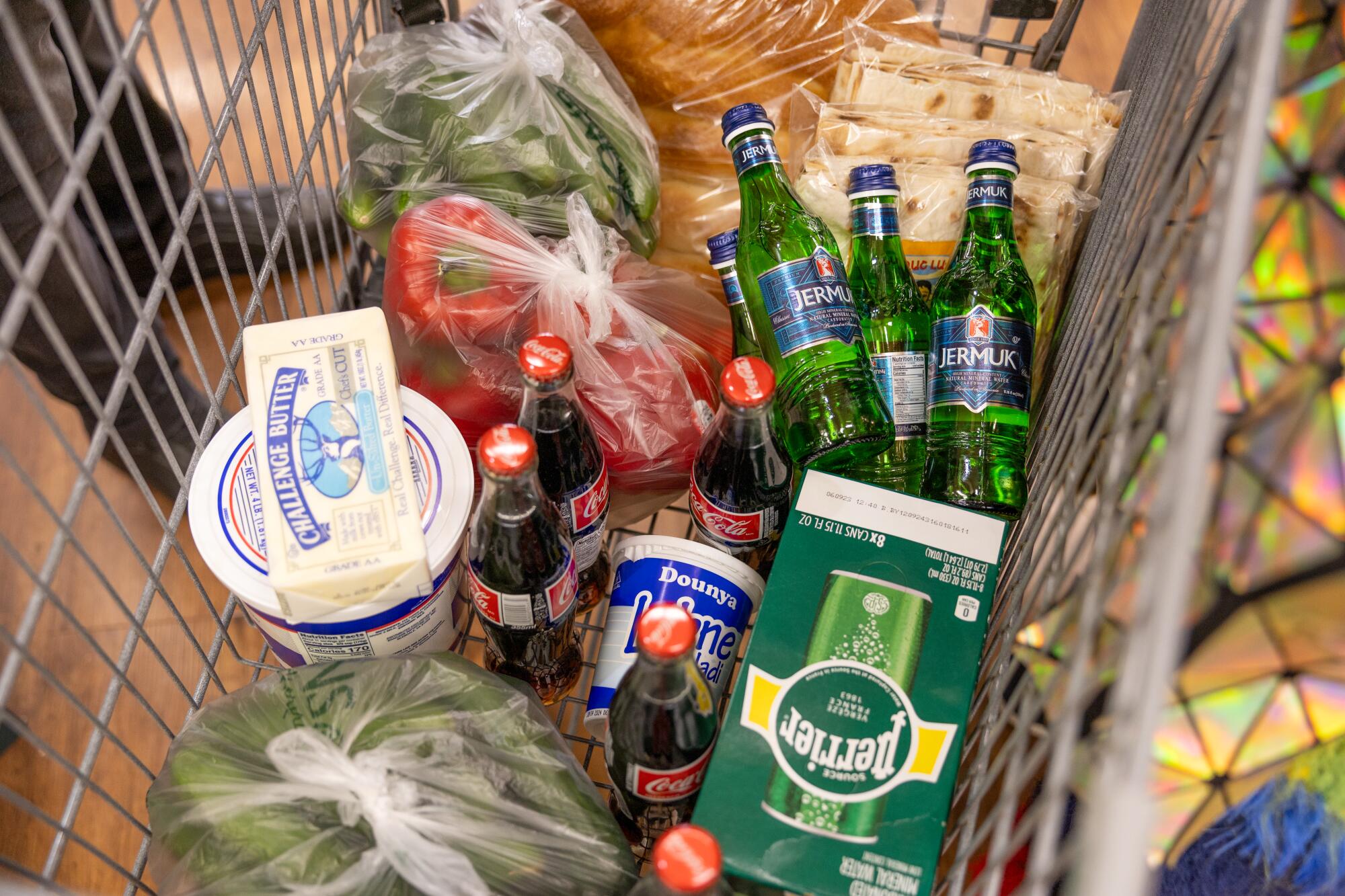
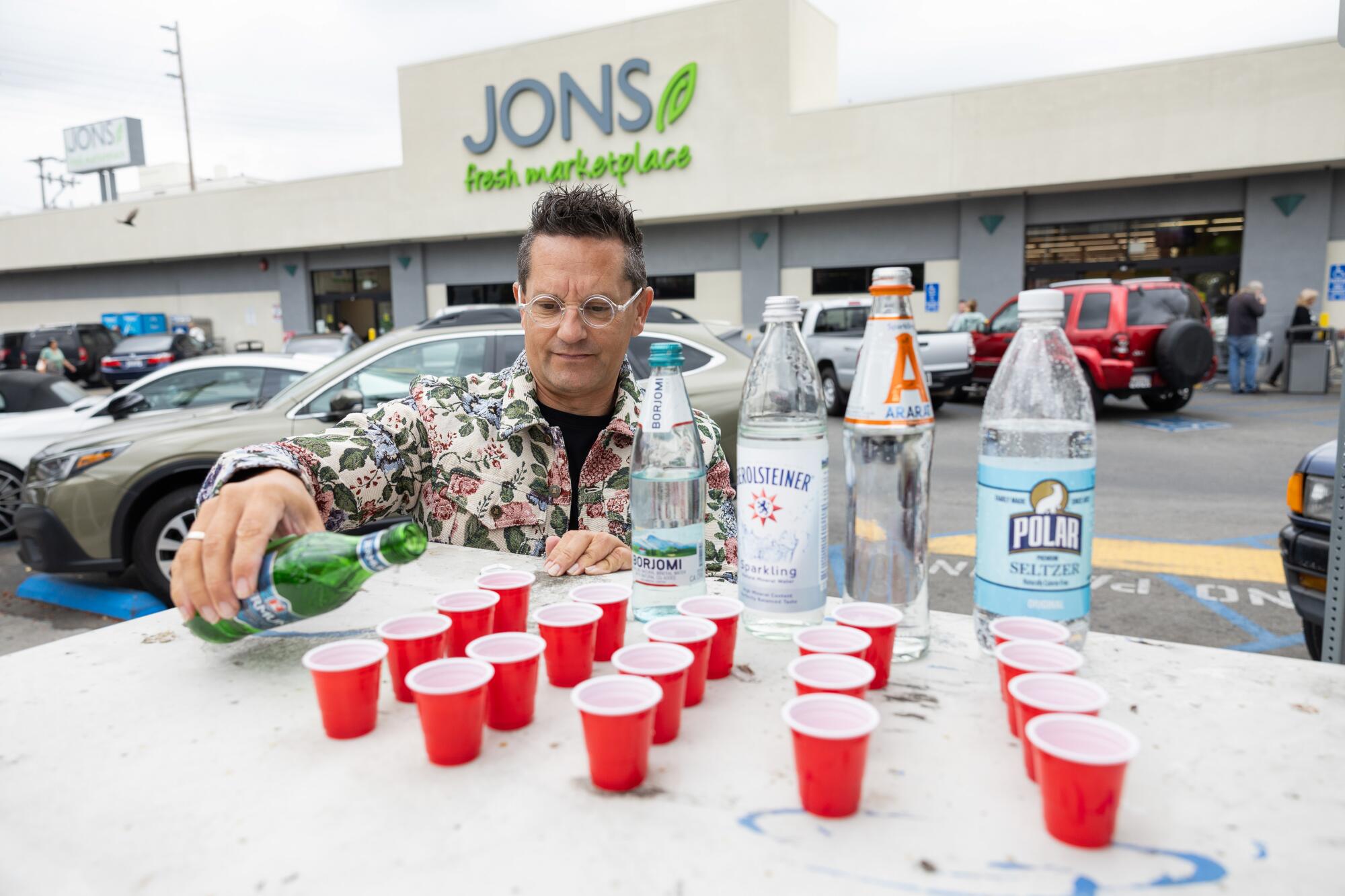
For a little over $10, Martin and I purchase five waters for an impromptu taste tasting on an electrical box out front, using tiny red Solo cups typically used for shots of alcohol. Riese arranges them from lowest mineral content to highest, starting with Poland Springs, then Ararat, followed by Gerolsteiner, Borjomi and Jermuk (also from Armenia). As we move from right to left, the tasting notes grow more complex, and the saltiness intensifies. As I connect with my own inner water sommelier, I identify Borjomi, the aforementioned hangover aide, as my favorite, and find Poland Springs to taste revolting in comparison to the others.
Riese comments colorfully, as a wine sommelier would detail the notes of a Pinot Grigio, suggesting certain waters pair best with certain foods. “Your food will taste differently just based on the water,” he says, offering that Saratoga (from New York), also available at Jons, pairs great with sushi because of its low mineral content.
One man’s take on the best (and worst) bottled waters available on the market.
The best part is, all of this was far more affordable than a wine tasting — or even what you’d find at other high-end grocery stores.
“I feel sometimes that Americans love to get fooled,” Riese says, with the caveat that he loves America. “I don’t know what it is. But they love thinking always when something is more expensive, it’s immediately a better product. And that is absolutely not true. Especially when it comes to water.”
More to Read
Sign up for The Wild
We’ll help you find the best places to hike, bike and run, as well as the perfect silent spots for meditation and yoga.
You may occasionally receive promotional content from the Los Angeles Times.


